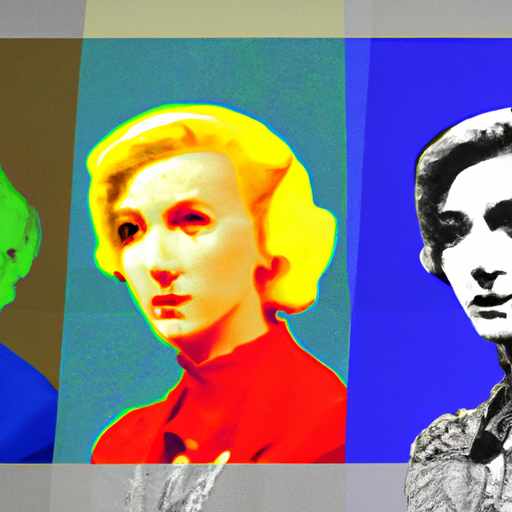
-
Table of Contents
Navigating Visual Composition in Graphic Art

Visual composition is a fundamental aspect of graphic art that plays a crucial role in capturing the attention of viewers and conveying the intended message effectively. It involves arranging various elements such as lines, shapes, colors, and textures in a visually pleasing and harmonious manner. Navigating visual composition requires a deep understanding of design principles, as well as the ability to experiment and think creatively. In this article, we will explore the key elements of visual composition in graphic art and provide valuable insights on how to create compelling and impactful designs.
The Importance of Visual Composition
Visual composition is the foundation of any successful graphic design. It determines how the elements within a design interact with each other and how they guide the viewer’s eye. A well-composed design can evoke emotions, communicate ideas, and create a memorable experience for the audience. On the other hand, a poorly composed design can confuse or overwhelm the viewer, leading to a lack of engagement and understanding.
Effective visual composition is particularly important in graphic art because it often serves a specific purpose, such as advertising a product, conveying a message, or telling a story. By understanding and applying the principles of visual composition, graphic artists can create designs that not only look visually appealing but also effectively communicate the desired message.
The Elements of Visual Composition
There are several key elements that contribute to the overall visual composition of a graphic design. These elements include:
- Lines: Lines are one of the most basic elements of visual composition. They can be straight, curved, or diagonal, and they can create a sense of movement, direction, or structure within a design. For example, horizontal lines can create a sense of calmness and stability, while diagonal lines can convey energy and dynamism.
- Shapes: Shapes are another important element of visual composition. They can be geometric or organic and can be used to create balance, contrast, or emphasis within a design. For instance, using a combination of different-sized circles can create a sense of rhythm and movement.
- Colors: Colors play a significant role in visual composition as they can evoke emotions, create contrast, and establish a visual hierarchy. Different color combinations can convey different moods and messages. For example, warm colors like red and orange can create a sense of excitement and energy, while cool colors like blue and green can evoke a feeling of calmness and tranquility.
- Textures: Textures add depth and visual interest to a design. They can be smooth, rough, or somewhere in between. By incorporating textures, graphic artists can create a tactile experience for the viewer and enhance the overall visual composition.
The Principles of Visual Composition
In addition to the elements, there are several principles that guide the effective use of visual composition in graphic art. These principles include:
- Balance: Balance refers to the distribution of visual weight within a design. It can be symmetrical, asymmetrical, or radial. Achieving balance is important as it helps create a sense of stability and harmony. For example, a symmetrical design can create a formal and orderly feel, while an asymmetrical design can create a sense of dynamism and movement.
- Contrast: Contrast involves using elements that are different from each other to create visual interest and emphasis. It can be achieved through variations in color, size, shape, or texture. Contrast helps guide the viewer’s eye and highlight important elements within a design.
- Hierarchy: Hierarchy refers to the organization and arrangement of elements in order of importance. It helps guide the viewer’s attention and ensures that the most important information is easily perceived. Graphic artists can establish hierarchy through variations in size, color, or placement of elements.
- Repetition: Repetition involves using similar elements throughout a design to create unity and consistency. It can be achieved through the repetition of shapes, colors, lines, or patterns. Repetition helps create a sense of rhythm and cohesion within a design.
- Proximity: Proximity refers to the placement of elements in relation to each other. Elements that are close together are perceived as being related or belonging to the same group. By using proximity, graphic artists can create visual relationships and organize information effectively.
Case Studies: Navigating Visual Composition in Graphic Art
Let’s explore a few case studies that demonstrate the effective use of visual composition in graphic art:
Case Study 1: Apple
Apple is known for its minimalist and visually appealing designs. The company’s logo, which consists of a simple apple silhouette, is a perfect example of effective visual composition. The use of a single shape and color creates a strong visual impact, while the placement of the logo on various products and advertisements establishes a sense of hierarchy and consistency.
Case Study 2: Nike
Nike’s “Just Do It” campaign is another example of successful visual composition. The use of bold typography, combined with dynamic lines and shapes, creates a sense of energy and movement. The contrast between the black background and the white text further enhances the visual impact and ensures that the message stands out.
Conclusion
Navigating visual composition in graphic art is a complex yet rewarding process. By understanding the key elements and principles of visual composition, graphic artists can create designs that are visually appealing, impactful, and effectively communicate the desired message. Whether it’s arranging lines, shapes, colors, or textures, each element plays a crucial role in guiding the viewer’s eye and creating a memorable experience. By studying successful case studies and experimenting with different compositions, graphic artists can continue to refine their skills and create compelling designs that captivate and engage their audience.
